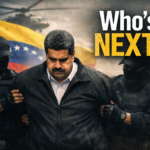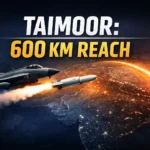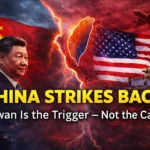On a crisp September morning, the world watched as three of its most powerful leaders stood side by side on a single balcony. In the heart of Beijing, Xi Jinping hosted Vladimir Putin and Kim Jong Un at a grand military parade marking the 80th anniversary of the end of World War II.
The imagery was deliberate: Chinese J-20 stealth fighters streaking overhead, long columns of armored vehicles rolling past Tiananmen Square, and advanced missile systems rumbling through the streets. With Putin and Kim flanking him, Xi sent a clear message: China is not merely a rising power—it is a global force capable of rallying partners and showcasing cutting-edge military technology.
Beijing’s Strategy: Stagecraft and Strength
Xi’s decision to share the platform with Putin and Kim was a carefully calculated act of geopolitical theater. By placing Russia’s president and North Korea’s leader on the same stage, China demonstrated its ability to orchestrate a coalition of powers that defy Western dominance.
This was not just a celebration of history but a deliberate assertion of strength. The Beijing military parade highlighted China’s technological progress, with hypersonic missiles, stealth drones, and next-generation armored systems dominating the visuals. Beijing wanted the world to see that its modernization drive is not slowing down—and that its leadership position within forums like the Shanghai Cooperation Organization (SCO) is being backed by real power projection.
Moscow’s Message: Isolation Is a Myth
For Putin, the optics were invaluable. Russia’s ongoing war in Ukraine has drawn intense Western sanctions, but his presence in Beijing symbolized that Moscow is far from isolated.
Russia showcased its own military strengths, with systems like the S-400 and references to the upcoming S-500 air defense program. This was a signal that Russia is not only finding allies in Asia but also continuing to advance its defense sector despite Western pressure.
North Korea’s Spotlight: A Rare Moment of Legitimacy
Kim Jong Un’s presence was equally significant. For a regime often treated as a global pariah, Beijing’s invitation was a diplomatic victory. North Korea used this platform to project confidence, leveraging its ties to China and Russia to strengthen its bargaining position with Washington and Seoul.
Although Pyongyang lacks the industrial depth of Beijing or Moscow, its rapidly advancing missile program ensures its place at the table. This parade appearance amplified North Korea’s role in shaping regional security dynamics.
The Western View: Alarm Without Panic
The images of Xi, Putin, and Kim standing shoulder to shoulder drew immediate headlines in Washington and European capitals. Analysts debated whether this was a symbolic gesture or a sign of a deeper alliance.
For now, Western strategists see this as stagecraft with substance: a carefully choreographed demonstration of unity and military technology, but not a NATO-style alliance. The U.S. continues to focus on shoring up alliances in Asia—including Japan, South Korea, and India—while NATO remains focused on Ukraine.
Is This the Start of a Bloc?
Despite its drama, the Beijing event doesn’t signal a formal defense pact. The interests of the three powers remain distinct:
- China seeks economic stability and technological dominance.
- Russia relies on Asia to sustain its war economy.
- North Korea prioritizes regime survival and leverage.
Yet the symbolism is undeniable. Military parades like this are more than ceremonial—they are strategic messages. By showcasing J-20 stealth fighters, hypersonic weapons, and autonomous combat vehicles, China demonstrated its rapid military modernization and growing self-reliance.
The Parade as a Message to the West
This was more than an anniversary event. It was a global broadcast of capability: China’s ability to mass-produce advanced systems, Russia’s willingness to stand defiant, and North Korea’s place in a rising Eastern security narrative.
The event also highlighted how military-industrial partnerships between Moscow and Beijing are deepening. Systems displayed at the parade are increasingly integrated, with Russian expertise in missiles complementing Chinese manufacturing capacity.
For Beijing, this was also a soft power play. By hosting its partners in such a high-profile setting, China reinforced its status as a central power hub, a role also visible in the SCO’s growing influence.
What to Watch Next
While this wasn’t the birth of a formal bloc, it has laid the groundwork for future developments:
- Joint military drills between China, Russia, and North Korea.
- Defense technology sharing to bypass Western export restrictions.
- Coordinated messaging designed to counter Western parades, alliances, and deterrence strategies.
The world is witnessing a shift from ceremonial parades to strategic showcases—where military hardware is used as messaging and diplomacy.
Connecting the Dots
This show of power ties neatly into other recent geopolitical moves:
- Russia–India’s S-500 and 5th-Gen Jet Development shows Moscow’s global outreach beyond Beijing.
- The Rafale Ambush demonstrates the growing sophistication of airpower in South Asia.
- India–Israel’s Defense Alliance highlights how rival blocs are accelerating militarization.
The Beijing parade adds to this mosaic—a reminder that the balance of power is shifting, and that traditional alliances face a multipolar future.
Final Thoughts
The joint appearance of Putin, Xi, and Kim wasn’t just a show; it was a strategic statement. While these three nations are unlikely to form a NATO-style bloc soon, they are clearly aligning narratives and military posturing to counterbalance the West.
As the roar of J-20 stealth jets faded over Tiananmen Square, one message was clear: the era of uncontested Western dominance has ended, and a new chapter in military and geopolitical competition has begun.









